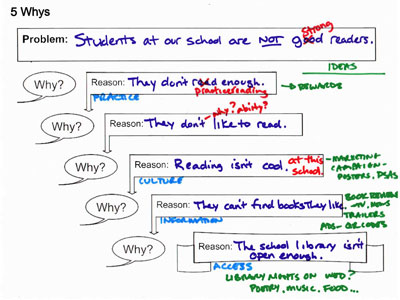
Deploying graphic organizers to match desired cognitive complexity

Normal Webb developed the Depth of Knowledge levels in 1997 as a way to evaluate the cognitive complexity of student tasks. The idea isn’t to make tasks one level or the other, but to ensure that classrooms are asking students to do a mix of tasks across all levels of thinking.
A graphic organizer uses visuals to show relationships and connections between ideas. Many classrooms employ graphic organizers to help better comprehend large amounts of information and complex ideas. Not all graphic organizers, however, require the same level of thinking.
At level 1, students can use graphic organizers to demonstrate knowledge of facts and details. Great level 1 graphic organizers include:
If students are reading literature or informational text, this could take the form of character trait clusters, 5 W’s organizers and character-setting-events organizers.

Sequence organizers work for almost every subject, whether it is the life cycle of an animal, the order of events in history, or the beginning-middle-end of a story.

At level 2, students can use more complex organizers, like Venn diagrams, to organize their thinking — showing comparisons, classifications, and hierarchies. Great level 2 graphic organizers include:
In English Language Arts, students can use Venn Diagrams to compare characters, genres, or texts. They can use sorting organizers to help them understand hierarchies in math and science, such as food chains and rules of geometry.

Students can use organizers like Pros and Cons or Facts vs. Opinions as they conduct research for science projects. Cause and effect organizers are helpful for thinking about events in history as well as impacts in science.

At level 3 and 4, graphic organizers are used not as the end goal or instructional task, but as a means for students to organize information and thinking during the process of solving a problem. In other words, graphic organizers are used to help students make sense of information for a bigger purpose.
To help them better think about content and think about their learning, the use of the graphic organizers at this level should be student-driven, not teacher designed.
Graphic organizers help students organize their thinking in ways that help them identify misconceptions as they encounter new information that leads them to rethink, reorganize, and iterate (level 4). As students work on larger projects, these organizers provide opportunities for formative assessments so that educators can more effectively coach learners.
In fact, a level 3 or 4 instructional task may be effectively supported by a level 1 sequencing task that helps a team clarify their understanding of the steps in a process or problem they are trying to solve. Other organizers may get them thinking more deeply about the content or their approach to the problem, such as this 5 Whys example.

Level 3 and 4 instructional tasks often take the form of project-based learning (PBL). The goal of a PBL approach is not only high-level thinking and deeper content learning, but also the acquisition of “college and career-ready” skills like project management, leadership, and collaboration. Graphic organizers can help students build these skills by facilitating the organization of information and the planning of tasks and project design.
To help them better think about content and think about their learning, the use of the graphic organizers at this level should be student-driven, not teacher designed.
Graphic organizers can be used to support student thinking and comprehension. Match the graphic organizer to the level of the instructional task and provide students with opportunities to use them at all levels of Webb's Depth of Knowledge for powerful classroom learning.

Follow us on Instagram for daily inspiration

Create a thought web, cluster, flowchart, or other graphic organizer for a lesson
Five ideas for creative classroom centers
Creative, digital book reviews
Fun and powerful ideas with animated characters

Wixie
Share your ideas, imagination, and understanding through writing, art, voice, and video.

Rubric Maker
Create custom rubrics for your classroom.

Pics4Learning
A curated, copyright-friendly image library that is safe and free for education.

Wriddle
Write, record, and illustrate a sentence.

Get creative classroom ideas delivered straight to your inbox once a month.
Topics